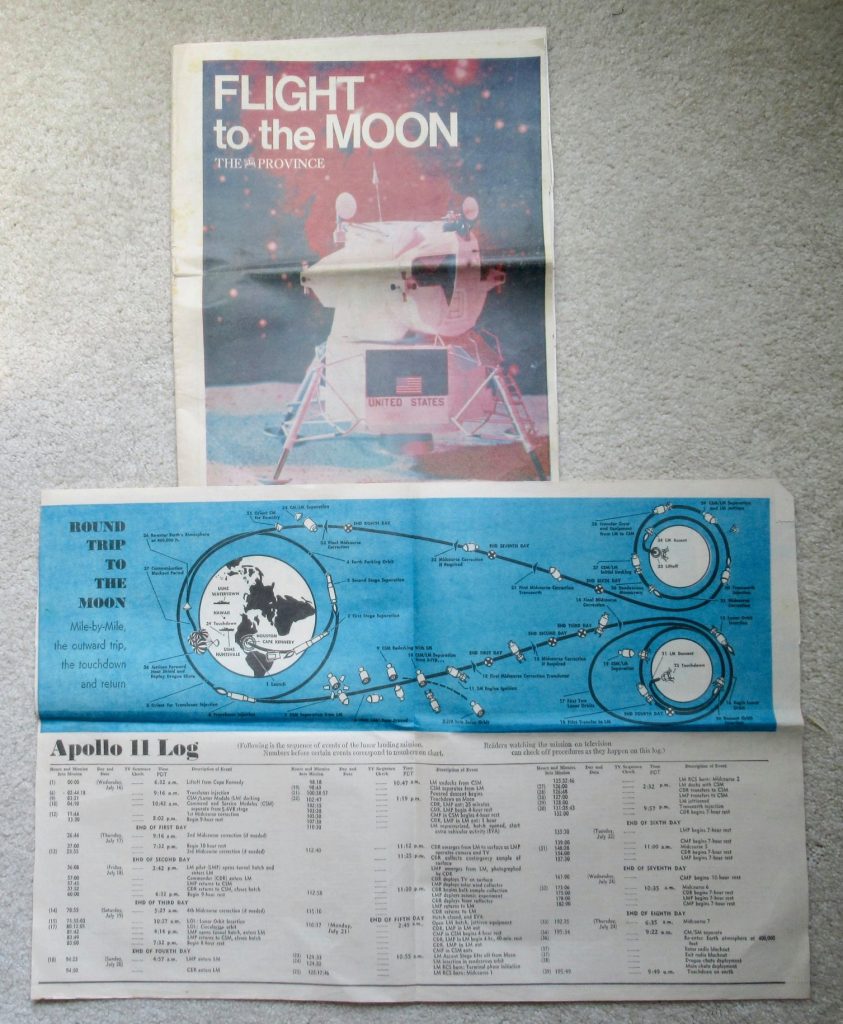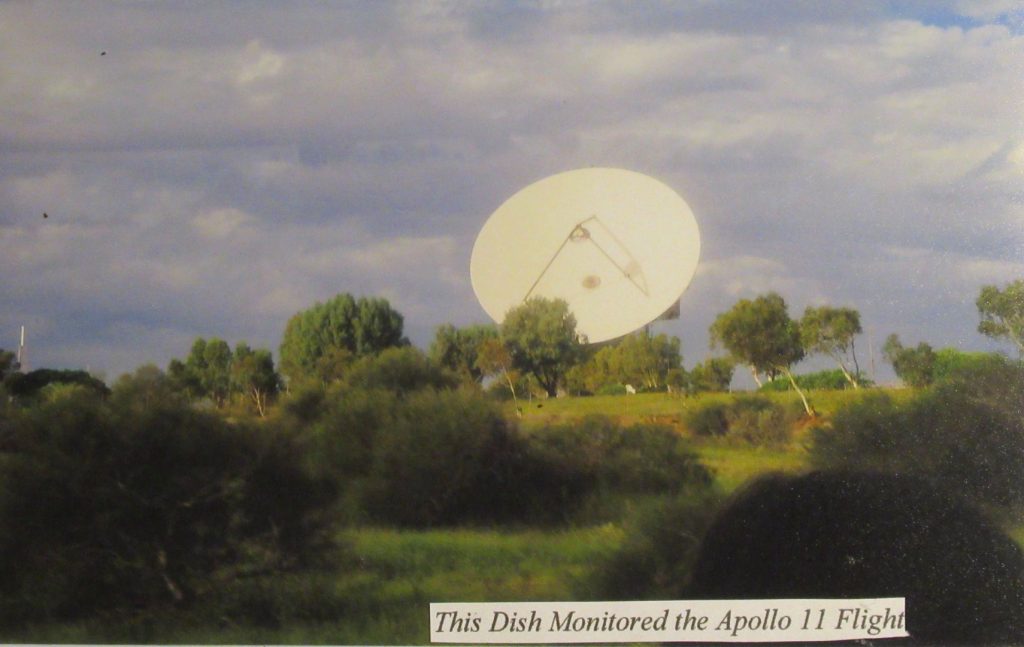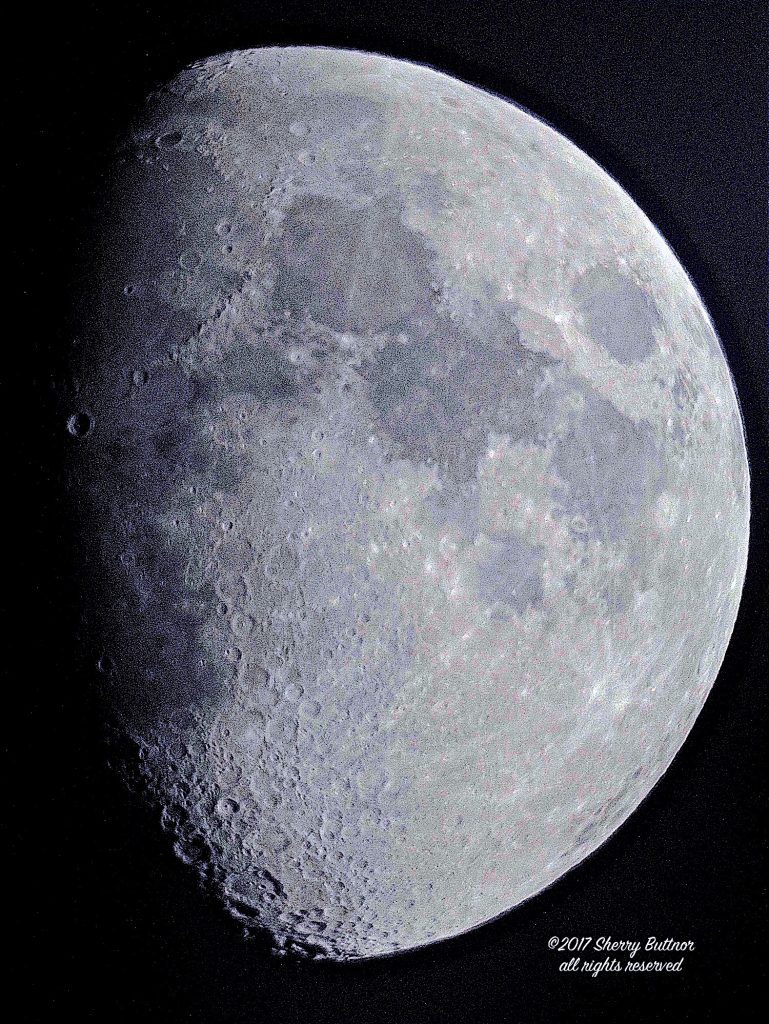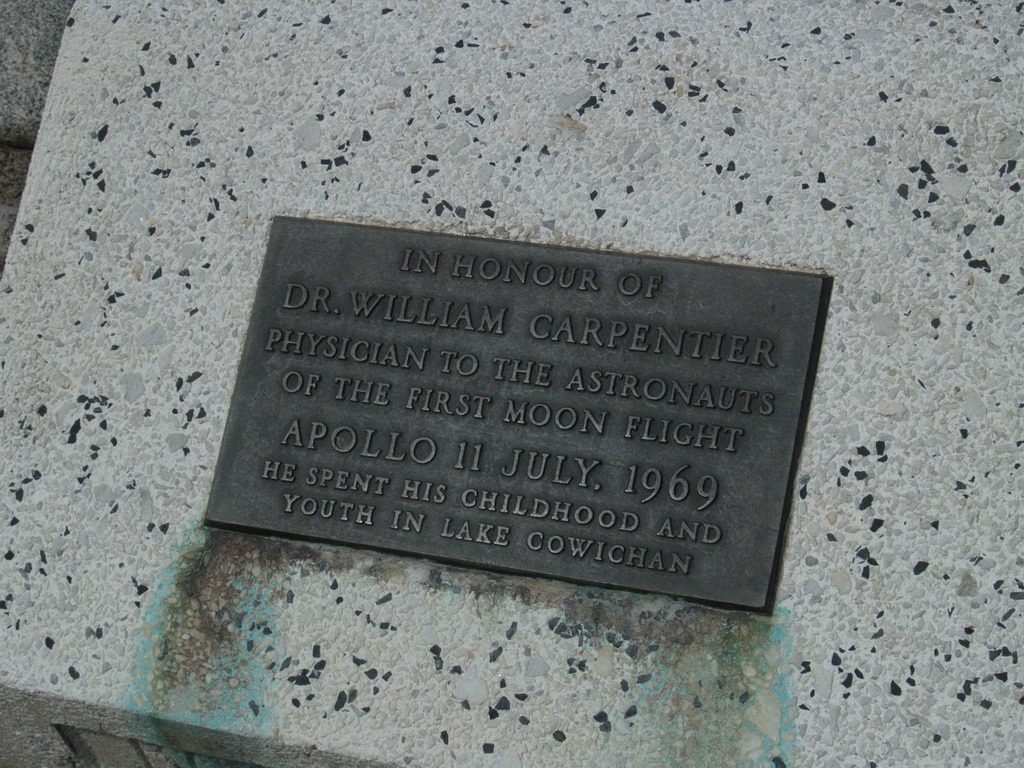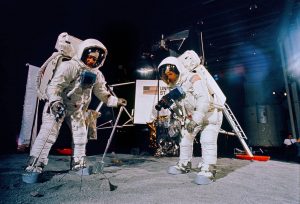RASC Victoria Centre members who were old enough to have watched original television broadcasts and read the newspapers of the day, featuring the momentous landing of the Apollo 11 mission on the lunar surface on July 20, 1969 have some vivid memories to share. Some of their memorabilia is also fun to look at after 50 years has passed!
Jim Hesser
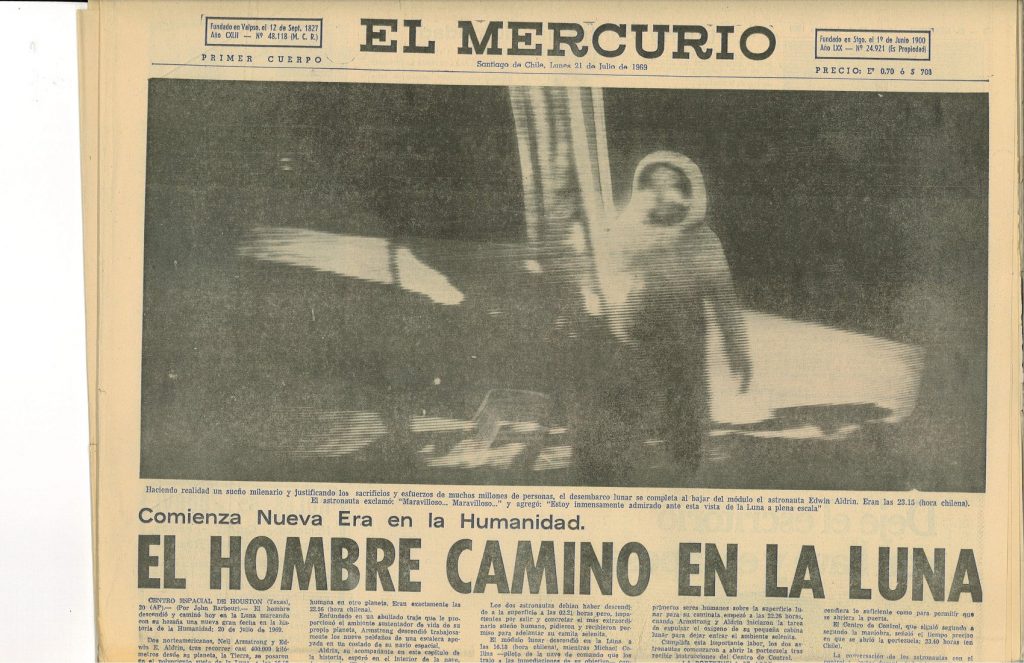
As new residents of La Serena, Chile since September, 1968 (where Jim was a young staff astronomer at the new Cerro Tololo Inter-American Observatory), we were in Santiago the weekend of 20 July 1969. At that time TV was not yet available in La Serena, but fortunately it was in Santiago. Because the astronauts were supposed to sleep after their late-afternoon landing, we went off for an early dinner at a Chinese restaurant.
Throughout our meal our young waitress was listening to a transistor radio held tightly to her ear. Mid-way through our dinner she approached to ask (in Spanish), “You are Americans, right?” “Yes, we are; why?” “Your countrymen are walking on the Moon!”
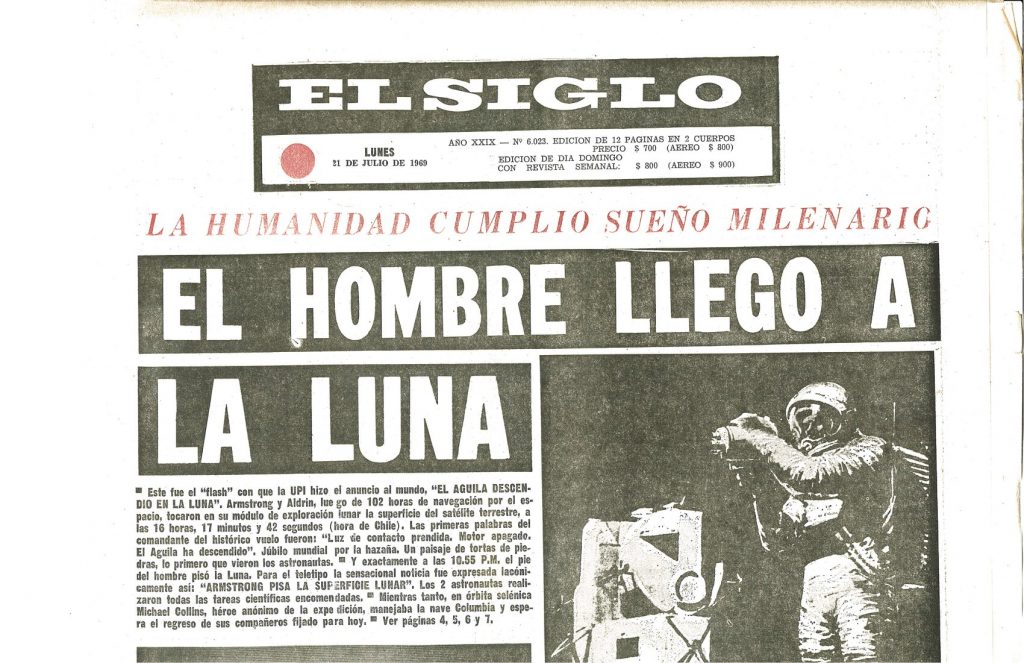
After hurriedly paying the bill, we rushed the five blocks back to our hotel, where we found all staff and guests crowded into the common room where the hotel’s single black-and-white TV was showing the grainy, but awe-inspiring, images of the first Moon walk. A voice solemnly intoned (in Spanish), “This broadcast is coming to you from the Moon.” Energy and wonder were intense in that room, indelibly burning this transformative event into our memories.
[The front pages of two Chilean newspapers from 21 July 1969 which we’ve saved for 50 years: El Mercurio (a conservative paper still publishing) and El Siglo (reflecting views of the Communist Party and which ceased publication after the 1973 military coup), both of which marvelled at the significance of this happening.]
Diane Bell
I have searched everywhere for the one photo I took on July 20, 1969. I do remember it was a shot of the Magnavox TV console in Aunt Mickey and Uncle Bill’s den in their house in Vancouver. A black and white image showed Neil Armstrong stepping onto the Moon. A very exciting time for us – and the rest of my family on the Island !!
I did find another photo that I took several years ago, though. On a camping and hiking trip through Western Australia seven years go, we went through a town called Carnarvon, home to one of the radio dishes that was instrumental in guiding Apollo 11 on the way to the Moon.
I’m so glad I had the camera ready !! Getting ready to celebrate 50 years of the Moon landing….
Sherry Buttnor – Reflections from a simple mind
Here we are on the eve of the 50th anniversary of the time when humans first set foot on another world.
I remember it well; watching with spellbound attention the ethereal images on a B&W TV, breathtakingly captioned with LIVE FROM THE SURFACE OF THE MOON. I was captivated. My dad was ex-RCAF. We spend many happy Sundays at YYC watching airplanes; I inherited a love of flight from him (either by intent, or osmosis) and spaceflight was a logical progression. Even I could understand that at the tender young age of 10.
The seed was planted.
A year or two after Apollo 11, I went on a field trip one Saturday evening to the Dominion Astrophysical Observatory here in Victoria. Back then, you could look through an eyepiece in the mighty Plaskett telescope, and the view through it was glorious.
The seed had germinated.
That year I asked Santa for a telescope of my own, and he obliged with a little refractor, of which I was very fond, and used often for the following decade.
The seed had sprouted.
In the early 80s, it all changed. Fuelled by Carl Sagan’s Cosmos and self-study via the Open Learning Institute’s Project Universe and early computer programs on my Commodore 64, I built bigger and better telescopes, I immersed myself in the universe with a love I carry today, and the seed was in full blossom.
And here we are, on the cusp of one of the main events that started my 50-year adventure in astronomy.
Tomorrow evening, as a member of the Royal Astronomical Society of Canada, I’m privileged to be able to go up to the Observatory, where I had my first look, and show our visitors their first look through a telescope as together we recall one of the great technological moments in human history, 50 years ago.
What a journey it has been! For me, and for all of us on the Good Earth – at home.
Joe Carr
I remember watching the first steps taken on the Moon on our black and white TV as well. I think my first live TV broadcast was of Ripple Rock being blown in 1958, but the Apollo 11 landing in 1969 stands out in my mind, because I had a passion for astronomy and space exploration that was ignited about six years previous by my grade six teacher, Malcolm Riley.
Like so many of my Baby Boomer generation, we expected that 50 years later we would be well on our way to exploring the solar system with humans aboard spacecraft. That expectation has not been met. It is with considerable dismay that I look back on the Apollo missions as the last which saw humankind travel through deep space. How much longer will we be stuck in low-Earth orbit before we venture into the rest of the Universe?
Jim Cliffe
A Study in Sepia
The fiftieth anniversary of the Apollo 11 moon landing was cast by most people as a celebration. But I couldn’t help but feel sadness.
Fifty years after what was a milestone, a triumph of skill and determination, a masterful accomplishment, and we as a culture seem to be walking backwards.
I watched the moment of landing on the proverbial tiny black and white TV. My mother and sister were mildly interested and watching with me, my father was outside. I was filled with excitement and trepidation, building until “Tranquility Base here…” and I leaped up to run and tell my father.
He was outside, talking with a neighbour. When I rushed up and burst out that they had landed on the Moon, he barely nodded, ans seemed almost amused at my excitement. He kept on talking with the neighbour, a man he only knew slightly, and approved of less.
Still excited, I ran back to the television. My sister and mother had seen what they wanted to see and had left. I watched the broadcast to the end by myself.
In the half century since, we seem to have retreated from ambition and energy. Careful critical thought has given way to superficial emotion, popularity, and empty show. Great discoveries and advances have been made, but most of the population don’t care. Their attention is caught by shiny devices, exciting entertainment, and flashy celebrities.
So this anniversary, as great as it is, feels sad to me. A fin de siecle reminder of what we once dared attempt. In my imagination, the crowds leave the party. Go home, and look for the next distraction. The history, the future that might have been, and the sadness of the loss will wash over them without notice, leaving nothing.
Randy Enkin

In the summer of 1969, I was an 8-year old at Camp White Pine, in Haliburton Ontario. There were never any televisions at camp, except on July 20, 1969, when they placed two B&W televisions on ladders in the Rec Room, and a few hundred campers squished on the floor to watch the moon landing.
All my friends wanted to be astronauts. But astronauts had all trained as air force pilots, and that didn’t suit me. I remember thinking that the people in mission control, and the scientists who were telling the astronauts what to do were the people to follow.
I decided that I would become an astronomer. Very quickly I mastered the subject, but then over the following 50 years I mostly found out how little I know. In the end, I became a geologist, but astronomy, especially concerning the moon, has always been my passion. I am particularly proud to be the first member of the Victoria Centre to obtain the RASC “Explore the Moon” observing certificate.
Dr. Chris Gainor
Chris is the President of the Royal Astronomical Society of Canada, and is a prolific writer focusing on space exploration. Rather than quoting his many articles and books on space missions as they relate to Canada, we direct you to his online blog (with a pre-defined “Apollo 11” search term). Chris is a most passionate space geek, and works hard at meeting all the pioneers in the space industry. He is contracted to write the history of the Hubble Space telescope, and his book Arrows to the Moon is a fascinating read of how mankind traveled to the Moon, thanks to a good dose of Canadian ingenuity.
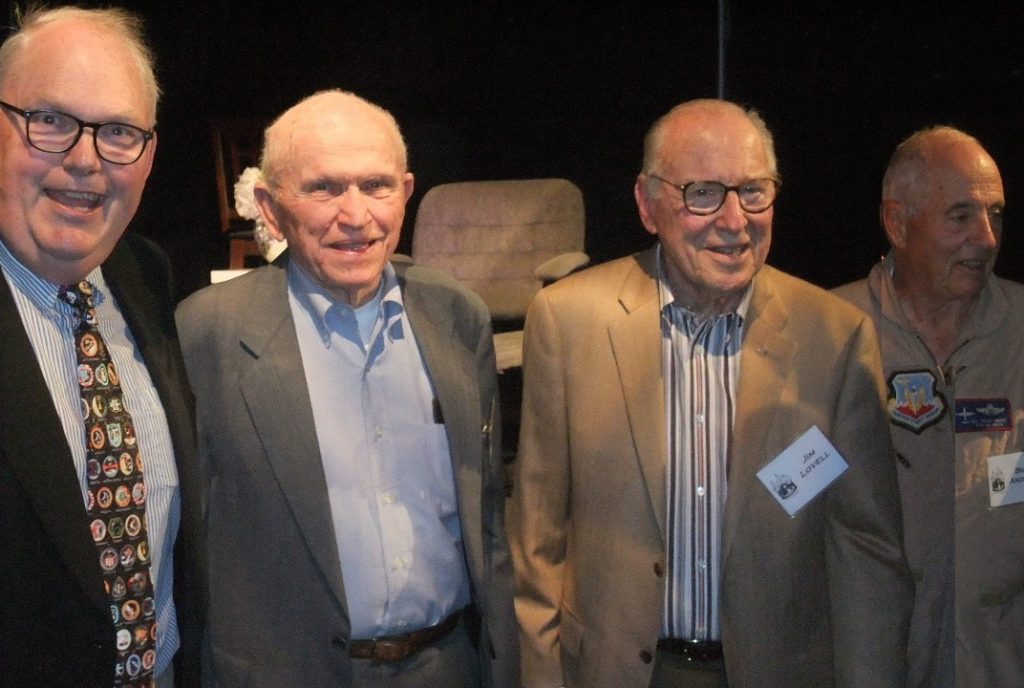
This documentary covers Canada’s contribution to Apollo, which is covered in greater depth in Chris’ book ‘Arrows to the Moon.’
